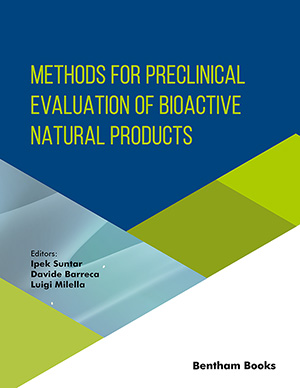Abstract
Background: High-quality of the oocyte is crucial for embryo development and the success of human-assisted reproduction. The postovulatory aged oocytes lose developmental competence with mitochondrial dysfunction and oxidative stress. Coenzyme Q10 (CoQ10) is widely distributed in the membranes of cells and has an important role in the mitochondrial respiration chain against oxidative stress and modulation of gene expression.
Objective: The objective of this study is to investigate the functions and mechanisms of CoQ10 on delaying postovulatory oocyte aging.
Methods: Quantitative real-time PCR and Immunofluorescence staining were used to determine the expression patterns of the biogenesis genes of CoQ10 in postovulatory aged oocytes compared with fresh oocytes. The mitochondrial function, apoptosis, reactive oxygen species (ROS) accumulation and spindle abnormalities were investigated after treatment with 10 μM CoQ10 in aged groups. SIRT4 siRNA or capped RNA was injected into oocytes to investigate the function of SIRT4 on postovulatory oocyte aging and the relationship between CoQ10 and SIRT4.
Results: Multiple CoQ10 biosynthesis enzymes are insufficient, and a supplement of CoQ10 can improve oocyte quality and elevate the development competency of postovulatory aged oocytes. CoQ10 can attenuate the aging-induced abnormalities, including mitochondrial dysfunction, ROS accumulation, spindle abnormalities, and apoptosis in postovulatory aged oocytes. Furthermore, SIRT4, which was first found to be up-regulated in postovulatory aged oocytes, decreased following CoQ10 treatment. Finally, knockdown of SIRT4 can rescue aging-induced dysfunction of mitochondria, and the efficiency of CoQ10 rescuing dysfunction of mitochondria can be weakened by SIRT4 overexpression.
Conclusion: Supplement of CoQ10 protects oocytes from postovulatory aging by inhibiting SIRT4 increase.
Keywords: CoQ10, postovulatory oocyte aging, embryo development, aging-induced abnormalities, mitochondrial function, SIRT4.
[http://dx.doi.org/10.1071/RD06103] [PMID: 17389130]
[http://dx.doi.org/10.1095/biolreprod61.5.1347] [PMID: 10529284]
[http://dx.doi.org/10.1093/humrep/13.2.381] [PMID: 9557843]
[http://dx.doi.org/10.1002/dvg.20756] [PMID: 21504043]
[http://dx.doi.org/10.1095/biolreprod57.4.743] [PMID: 9314575]
[http://dx.doi.org/10.1111/acel.12368] [PMID: 26111777]
[http://dx.doi.org/10.1046/j.1474-9728.2002.00004.x] [PMID: 12882352]
[http://dx.doi.org/10.18632/aging.100911] [PMID: 26974211]
[http://dx.doi.org/10.1155/2012/646354] [PMID: 21977319]
[http://dx.doi.org/10.1016/j.mito.2010.09.012] [PMID: 20933103]
[http://dx.doi.org/10.1055/s-0035-1567822] [PMID: 26562288]
[http://dx.doi.org/10.1042/BA20090035] [PMID: 19531029]
[http://dx.doi.org/10.3390/biology8020028] [PMID: 31083534]
[http://dx.doi.org/10.1016/j.freeradbiomed.2005.11.014] [PMID: 16631519]
[http://dx.doi.org/10.1016/j.biocel.2004.11.017] [PMID: 15778085]
[http://dx.doi.org/10.3164/jcbn.11-19] [PMID: 22448092]
[http://dx.doi.org/10.1016/j.mito.2007.03.007] [PMID: 17482885]
[http://dx.doi.org/10.1371/journal.pone.0099038] [PMID: 24911838]
[http://dx.doi.org/10.1086/500092] [PMID: 16400613]
[http://dx.doi.org/10.1016/j.bbalip.2014.08.007] [PMID: 25152161]
[http://dx.doi.org/10.1016/j.bbagen.2016.05.005] [PMID: 27155576]
[http://dx.doi.org/10.1006/bbrc.2001.5977] [PMID: 11716496]
[http://dx.doi.org/10.1016/j.freeradbiomed.2019.08.002] [PMID: 31398498]
[http://dx.doi.org/10.3390/cells8101132] [PMID: 31547622]
[http://dx.doi.org/10.1111/acel.12789] [PMID: 29845740]
[http://dx.doi.org/10.1016/j.ccr.2013.02.024] [PMID: 23562301]
[http://dx.doi.org/10.18632/aging.100616] [PMID: 24296486]
[http://dx.doi.org/10.18632/aging.101307] [PMID: 29081403]
[http://dx.doi.org/10.1007/s11095-005-8192-x] [PMID: 16247711]
[http://dx.doi.org/10.1093/biolre/ioy194] [PMID: 30265288]
[http://dx.doi.org/10.1016/j.taap.2019.114684] [PMID: 31325558]
[http://dx.doi.org/10.1016/j.lfs.2019.116639] [PMID: 31295472]
[http://dx.doi.org/10.1016/j.bbadis.2013.10.007] [PMID: 24140869]
[http://dx.doi.org/10.18632/oncotarget.16219] [PMID: 28418847]
[http://dx.doi.org/10.1016/j.bbamcr.2017.05.002] [PMID: 28476647]
[http://dx.doi.org/10.18632/oncotarget.15292] [PMID: 28206974]
[http://dx.doi.org/10.1530/REP-18-0211] [PMID: 29752296]
[http://dx.doi.org/10.1016/j.fertnstert.2012.11.031] [PMID: 23273985]
[http://dx.doi.org/10.1093/hmg/ddw257] [PMID: 27493029]
[http://dx.doi.org/10.1093/molehr/7.5.425] [PMID: 11331664]
[http://dx.doi.org/10.3389/fphys.2018.00044] [PMID: 29459830]
[http://dx.doi.org/10.1096/fj.07-100149] [PMID: 18230681]
[http://dx.doi.org/10.4161/cc.21169] [PMID: 22801551]
[http://dx.doi.org/10.1002/mrd.20300] [PMID: 15858797]
[http://dx.doi.org/10.1095/biolreprod.107.062703] [PMID: 17582009]
[http://dx.doi.org/10.1016/j.tice.2019.07.007] [PMID: 31582012]
[http://dx.doi.org/10.1093/humupd/dmp014] [PMID: 19429634]
[http://dx.doi.org/10.1095/biolreprod.112.106450] [PMID: 23365415]
[http://dx.doi.org/10.1021/bi050711f] [PMID: 16114873]
[http://dx.doi.org/10.1093/humrep/dew362] [PMID: 28137755]
[http://dx.doi.org/10.3390/jcm7110400] [PMID: 30380785]
































